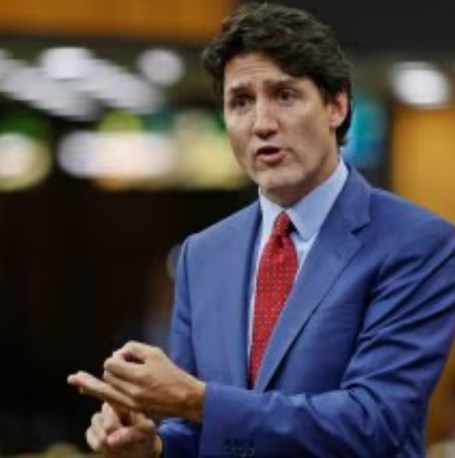Canada has of late introduced policies to limit immigration, citing economic pressures. Here is what the new changes say and how they may impact Indians looking to study broad.
Written by Raakhi Jagga
September 21, 2024 08:05 IST
From the Indian Express
 Canadian Prime Minister Justin Trudeau announced changes to the country’s international work permit system, aiming to reduce the number of immigrant workers in Canada.
Canadian Prime Minister Justin Trudeau announced changes to the country’s international work permit system, aiming to reduce the number of immigrant workers in Canada.
In posts on X on Thursday (September 19), Trudeau said Canada will grant 35% fewer international student permits this year, with the number going down by another 10% next year.
He said, “We’re reducing the number of low-wage, temporary foreign workers and shortening the duration of their work terms” — something he said in August as well. “We adjusted the program after the pandemic, but the labour market’s changed. We need businesses to invest in Canadian workers,” Trudeau added.
Why has Canada curbed international work permits?
Canada issued approximately 485,000 student permits in 2024, compared to over 500,000 in 2023. The number is expected to further decrease to 437,000 in 2025.
This is in line with recent policy changes where the government has cited pressure on cities’ infrastructure, higher rents and a “massive” increase in immigration for imposing restrictions.
It has also been found that some students used the system to apply for asylum after arriving in Canada. Trudeau said in his post, “Immigration is an advantage for our economy — but when bad actors abuse the system and take advantage of students, we crack down.”
The visa-issuance process has been adjusted to detect fraudulent or rejected asylum claims. The proposed reduction in temporary residents, from 6.5 per cent of Canada’s population to 5 per cent, will be reflected in the 2025-2027 immigration levels plan to be released by November 1.
What are the new restrictions on PGWP?
The Postgraduate Work Permits (PGWPs) for international graduates, postgraduates, master’s and doctoral programme students in Canada are valid for three years.
The Canadian government aims to reduce the number of PGWPs by 1.75 lakh through stricter rules in the next three years. Spouse work permits will be reduced by 50,000, and given only if one’s partner is pursuing a master’s programme for a minimum of 16 months.
Also Read | Canada, UK to Germany: Immigration frauds worth crores unearthed in Punjab’s Moga, Ludhiana; cases registered
Before applying for the PGWP, students must now pass a language proficiency test called the Canadian Language Benchmark (CLB). The required score is 7 for university undergraduates and 5 for college undergraduates for all applications submitted from November 1 onwards. Earlier, the CLB was only needed to apply for Permanent Residency (PR).
Graduates from programmes at public colleges will still be eligible for a PGWP if they graduate from a field of study connected to occupations witnessing long-term labour shortages in the country (as listed by the government).
Students enrolling in master’s and doctoral programs need to get a provincial attestation letter (PAL). Earlier, this condition was only for undergraduate students.
What are the challenges for students?
The future of lakhs of diploma holders who completed their courses in August is uncertain. Those who studied business administration, IT, etc., may find their qualifications no longer suit Canada’s long-term job requirements, said Nitin Chawla of Kapri, an immigration consultancy firm in Ludhiana.

Canadian colleges offering such courses may also see fewer international students enroll if they do not introduce new programmes. Punjab-based consultants have noted that students with skills in plumbing, refrigeration and air conditioning/heating, mechanics, AI and machine learning, carpentry, health, and the nursing sector — all seeing labour shortages — have opportunities to obtain a PGWP.
What are the alternatives?
According to data from Canada’s Immigration, Refugees Canadian Citizenship (IRCC), there were around 4.90 lakh international student work permit holders in 2017. As of 2023, this number grew to more than 10 lakh. Indian and Chinese students together accounted for more than half of international students in each of the last eight years.
According to Saurabh Arora, CEO of student accommodation service University Living, Canada’s decision to reduce the intake of immigrants reflects its commitment towards aligning its international education policy with long-term economic goals.
He added that the shift could encourage Indian students to consider other emerging destinations like Germany, Singapore, Italy and Ireland, which are becoming attractive for educational purposes.




